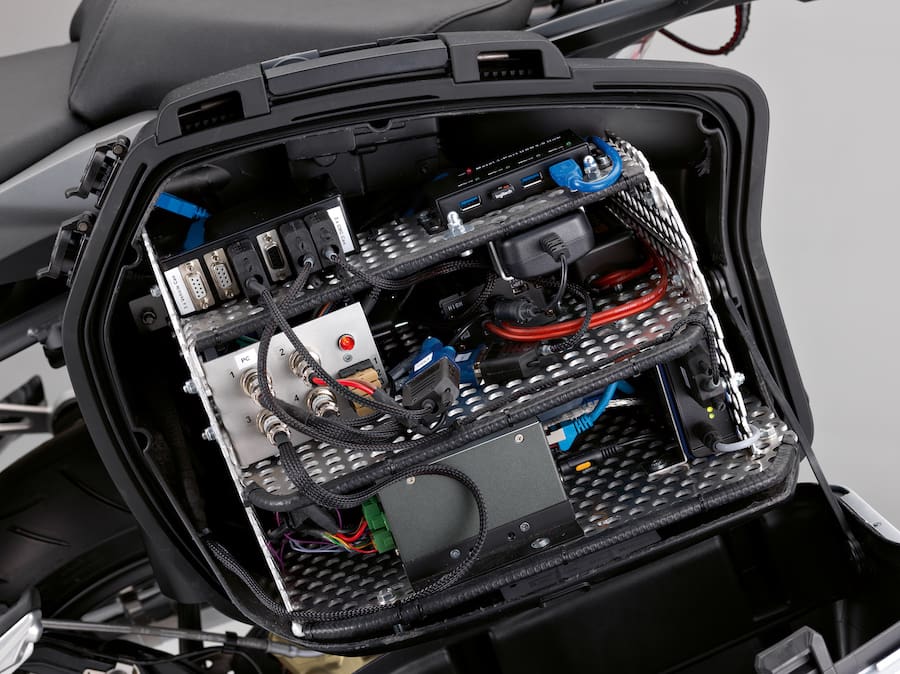Vehicle-to-vehicle communication is already emerging in the car world, and now it’s coming to a bike near you
EICMA, the biggest international motorcycle show of the year, is a world stage for companies to make glamorous global unveilings of their latest rival-beating offerings.
But next year’s EICMA will be different because as the world becomes more connected, so too do motorcycle manufacturers. And next year’s show will see multiple brands on the one stage unveiling common technology to advance the breed and improve the safety of riders.
In 2015, BMW, Honda and Yamaha got their heads together and formed the Connected Motorcycle Consortium (CMC) as a way of ensuring motorcycling didn’t get left out of the rapidly developing vehicle-to-vehicle communication systems emerging in the passenger car sphere.
Since then Suzuki, KTM and Kawasaki have also come to the party and the CMC has set a goal of 2020 for each member to release a production motorcycle that features Cooperative Intelligent Transportation Systems either as standard fitment or as an optional extra.
Last month in Munich the 2017 CMC Conference was held with high-level stakeholders from both the two- and four-wheeled worlds, including manufacturers as well as regulatory bodies. This is vital because, as BMW’s head of development and CMC president Karl Viktor Schaller pointed out, if manufacturers don’t start communicating, their products never will.
“Our aim is to promote the comprehensive use of cooperative safety systems for motorcycles at an early stage in order to exploit their potential for increasing safety as well as riding pleasure,” he said. “This is why we are inviting other companies to join in.”
The prototypes
During this year’s CMC conference, Yamaha, Honda and BMW unveiled prototypes featuring Cooperative Intelligent Transportation Systems (C-ITS). Honda used an Africa Twin, Yamaha opted for an MT-09 Tracer, and BMW used an R1200RS. All three models feature panniers that house the still-bulky technology but, like all new safety-enhancing tech, it’s expected to become smaller and more compact as it develops. And while little is known at this stage about exactly how the systems will communicate, we do know each system will rely on GPS as a means of locating other communicating vehicles.

BMW’s prototype carries all the necessary computer equipment in the panniers, but in future the C-ITS tech will be much more compact
The benefits
The conference outlined some of the basic scenarios the system will work in and some of its capabilities. As well as focusing on motorcycle-specific applications such as intersection violation warnings and right-turn assistant, the C-ITS will offer warnings for various events such as slow or stationary vehicles, roadworks, approaching heavy traffic, speed-limit violations and emergency vehicles. The most important goal of the CMC and its dialogue with car makers is the implementation of a Motorcycle Approach Warning into passenger-vehicle systems.

The challenges
Like a lot of road safety technology, getting systems developed for four-wheeled vehicles to work effectively on two-wheelers isn’t always straightforward. Take the antenna, for example. While it can nearly always be placed in the centre of a four-wheeler by putting it on the roof, getting the position right on a motorcycle isn’t as easy. The CMC has identified a long list of other differences too, such as lane position, steering-wheel angle and rain sensors — all of which C-ITS systems require for gathering information and all things the CMC is working to address.

Kel Buckley